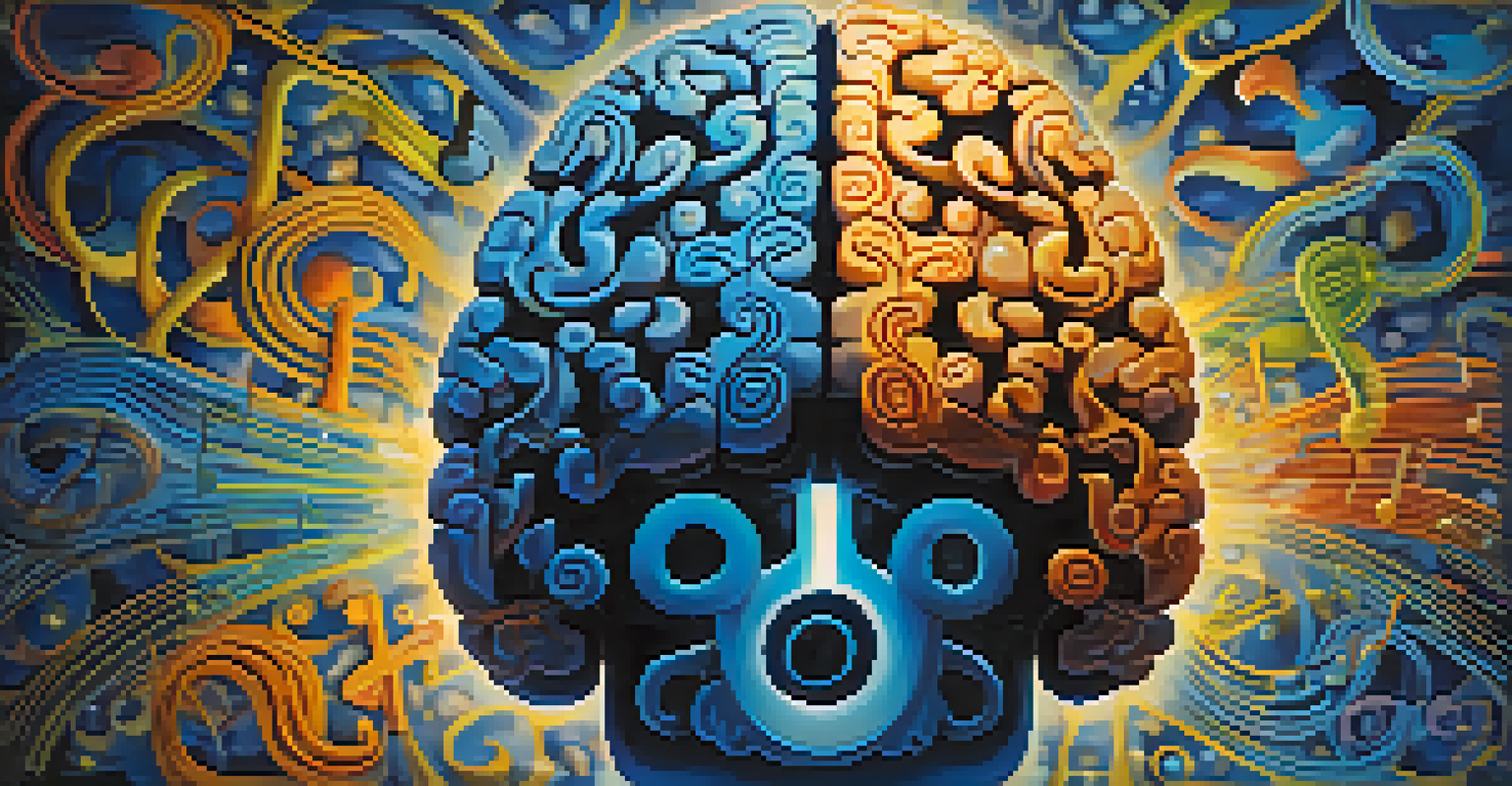Musical Mnemonics: A Creative Approach to Memory Improvement

What Are Musical Mnemonics and Why Use Them?
Musical mnemonics are memory aids that use melodies and rhythms to help you remember information. Think of them as catchy tunes that stick in your head, making recall easier than ever. By transforming facts into songs or rhymes, this technique taps into the brain's affinity for music, making learning enjoyable and effective.
Music can change the world because it can change people.
The power of music is well-documented; it not only evokes emotions but also strengthens memory retention. For instance, many of us can sing the alphabet song without even realizing it. This shows how melodies can create strong connections between concepts and enhance recall.
Using musical mnemonics can also make studying less daunting. Instead of rote memorization, you can engage with the material creatively, which can be especially beneficial for visual and auditory learners. This approach offers a fresh perspective on traditional study methods.
The Science Behind Musical Memory
Research shows that music activates multiple areas of the brain, particularly those involved in emotion and memory. This multi-faceted engagement can make information more relatable and easier to remember. For example, when you associate a song with a specific piece of information, it becomes part of a larger narrative in your mind.

Neurologically speaking, the brain processes music in a way that enhances cognitive functions. Melodies can create patterns that aid memory recall, much like how we remember the tune of a favorite childhood song. This connection between music and memory isn't just a theory; it's backed by studies in neuroscience.
Musical Mnemonics Simplify Learning
Using catchy tunes transforms information into memorable melodies, making recall easier and more enjoyable.
Additionally, the emotional resonance that music can evoke may further solidify memories. When you feel something while learning, the likelihood of remembering that information increases significantly. This emotional link is a powerful tool in the memory enhancement toolkit.
Creating Your Own Musical Mnemonics
Creating your own musical mnemonics can be a fun and rewarding experience. Start by identifying the information you want to remember, then think about a simple melody you enjoy. For instance, you could set a list of vocabulary words to the tune of 'Twinkle, Twinkle, Little Star' for easy recall.
If you can talk, you can sing. If you can walk, you can dance.
As you compose your mnemonic, keep it short, catchy, and relevant to the content. The more personal and relatable the song, the more likely you are to remember it. For example, if you're studying history, try to weave in significant dates or events into a familiar pop song or nursery rhyme.
Don't shy away from using humor or silliness in your mnemonics. The more ridiculous the song, the more memorable it can become. Many people find that laughter helps them remember better, so let your creativity run wild and enjoy the process!
Examples of Effective Musical Mnemonics
One classic example of a musical mnemonic is the '30 Days Hath September' rhyme, which helps people remember the number of days in each month. This simple tune provides a rhythmic way to recall a list of facts effortlessly. Similarly, the 'This Old Man' song can help teach counting, making numbers fun and memorable.
Another popular technique involves using popular songs. For instance, the tune of 'Row, Row, Row Your Boat' can be adapted to remember the order of operations in math: 'Please Excuse My Dear Aunt Sally.' This method not only simplifies complex concepts but also makes learning enjoyable.
Science Links Music and Memory
Research indicates that music activates brain areas associated with emotion and memory, enhancing retention of information.
You can even find educational content in children's programming, where catchy jingles teach everything from the solar system to multiplication tables. These examples highlight how effective musical mnemonics can be in both formal education and casual learning environments.
Using Technology to Enhance Musical Mnemonics
In today's digital age, technology can play a significant role in creating and sharing musical mnemonics. There are various apps and platforms that allow you to compose your own songs or find existing ones tailored to your learning needs. For instance, using a simple music creation app can help you set your mnemonic to a unique melody.
YouTube is another treasure trove of educational songs. Many educators have uploaded catchy tunes that cover various subjects, from science to language arts. By leveraging these resources, you can find inspiration or ready-made mnemonics to support your learning journey.
Moreover, social media platforms often feature creative content that can spark ideas for your own mnemonics. By connecting with others in educational communities, you can discover tips, tricks, and even collaborate on creating memorable songs together.
Common Challenges and How to Overcome Them
While musical mnemonics can be incredibly effective, some people may face challenges in creating them. One common hurdle is the fear of not being musically talented. However, remember that the goal is to create something personal and fun, not a perfect composition. Even simple tunes can be powerful memory aids.
Another challenge could be finding the right melody that resonates with you. If you struggle with this, try experimenting with different genres or tempos. Sometimes, an upbeat pop song can make a list of facts far more enjoyable to remember than a slow ballad.
Applications Beyond the Classroom
Musical mnemonics are used in various fields, from healthcare to corporate training, demonstrating their versatility and effectiveness.
Finally, consistency is key. To truly benefit from musical mnemonics, you need to practice regularly. Incorporate these tunes into your study routine, and over time, you’ll find that recalling information becomes easier and more intuitive.
Real-Life Applications of Musical Mnemonics
Musical mnemonics aren't just for students; they have applications in various fields. For instance, healthcare professionals often use mnemonics to remember complex medical terms or procedures. A catchy tune can turn a long list of symptoms into a memorable jingle, aiding quick recall in crucial situations.
In the corporate world, employees can use musical mnemonics for training sessions or onboarding processes. By setting company values or important policies to music, organizations can enhance knowledge retention and engagement among their staff. This creative approach can make a significant difference in employee performance.

Even in everyday life, people use musical mnemonics for practical purposes. From remembering grocery lists to planning events, these catchy tunes can simplify tasks and make them more enjoyable. The versatility of musical mnemonics demonstrates their effectiveness beyond traditional learning environments.